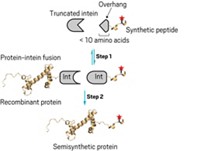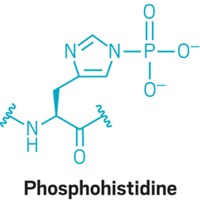Advertisement
Grab your lab coat. Let's get started
Welcome!
Welcome!
Create an account below to get 6 C&EN articles per month, receive newsletters and more - all free.
It seems this is your first time logging in online. Please enter the following information to continue.
As an ACS member you automatically get access to this site. All we need is few more details to create your reading experience.
Not you? Sign in with a different account.
Not you? Sign in with a different account.
ERROR 1
ERROR 1
ERROR 2
ERROR 2
ERROR 2
ERROR 2
ERROR 2
Password and Confirm password must match.
If you have an ACS member number, please enter it here so we can link this account to your membership. (optional)
ERROR 2
ACS values your privacy. By submitting your information, you are gaining access to C&EN and subscribing to our weekly newsletter. We use the information you provide to make your reading experience better, and we will never sell your data to third party members.
Proteomics
Single-molecule method identifies proteins in mixtures
Method harnesses Edman chemistry to pinpoint location of labeled amino acids
by Celia Arnaud
October 28, 2018
| A version of this story appeared in
Volume 96, Issue 43

Conventional mass spectrometric proteomics methods don’t work well for low-abundance proteins in complex mixtures. Edward M. Marcotte, Eric V. Anslyn, and coworkers at the University of Texas, Austin, report a method that allows them to perform highly parallel single-molecule identification of proteins at zeptomolar concentrations (Nat. Biotechnol. 2018, DOI: 10.1038/nbt.4278). To do this, they harness a classic protein-sequencing method—Edman degradation. In Edman sequencing, amino acids are chemically clipped from peptides one at a time and identified via chromatographic separation. In the new method, the researchers skip the chromatography and use fluorescence microscopy to look at the peptide left behind. They immobilize peptides that have been fluorescently labeled at lysine and cysteine residues and use a microscope to detect the fluorescence from the labels. They then subject the peptides to multiple rounds of Edman degradation. When a fluorescently labeled amino acid is clipped off, the peptide’s fluorescence either decreases or disappears entirely. Because the researchers know how many cycles occurred, and thus how many amino acids were clipped, they can determine where the labeled amino acid was located on the peptide. Although they demonstrated labeling of only cysteine and lysine, the researchers also have reagents that target glutamate, aspartate, and tryptophan. Computer simulations suggest that those five amino acids plus the specificity of protein-cutting enzymes should provide enough information to identify most proteins in the human proteome.




Join the conversation
Contact the reporter
Submit a Letter to the Editor for publication
Engage with us on Twitter